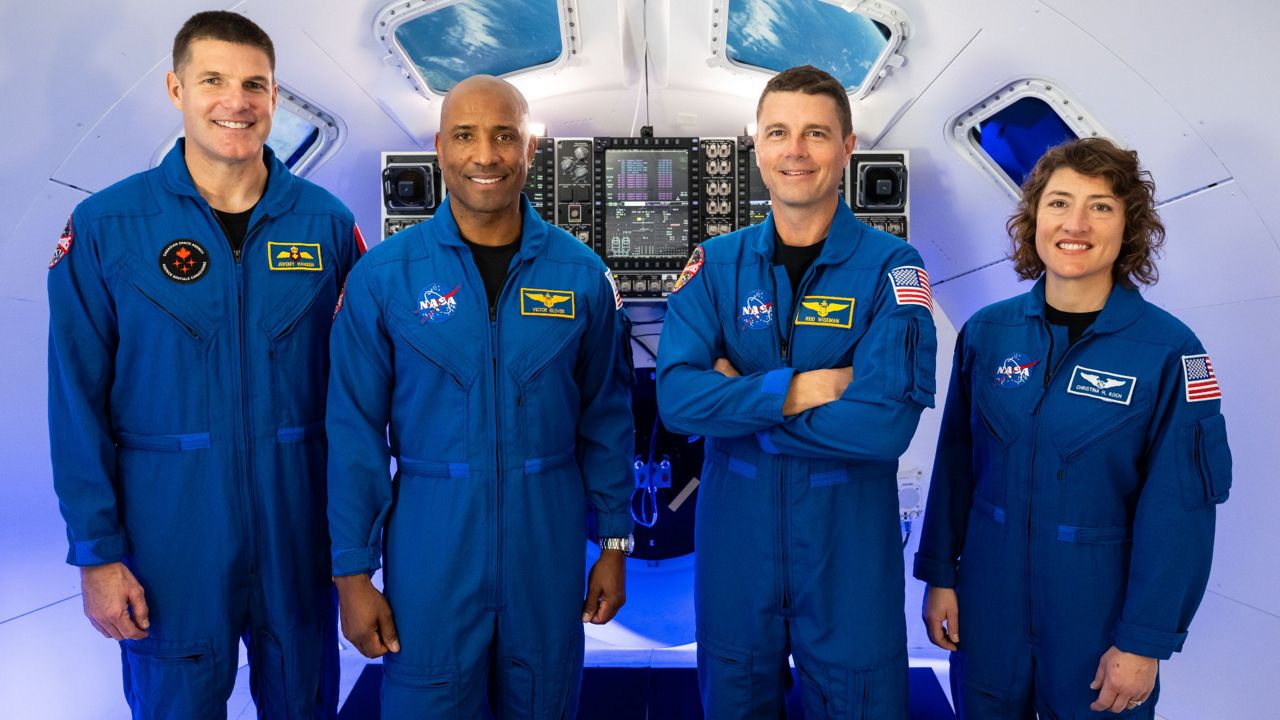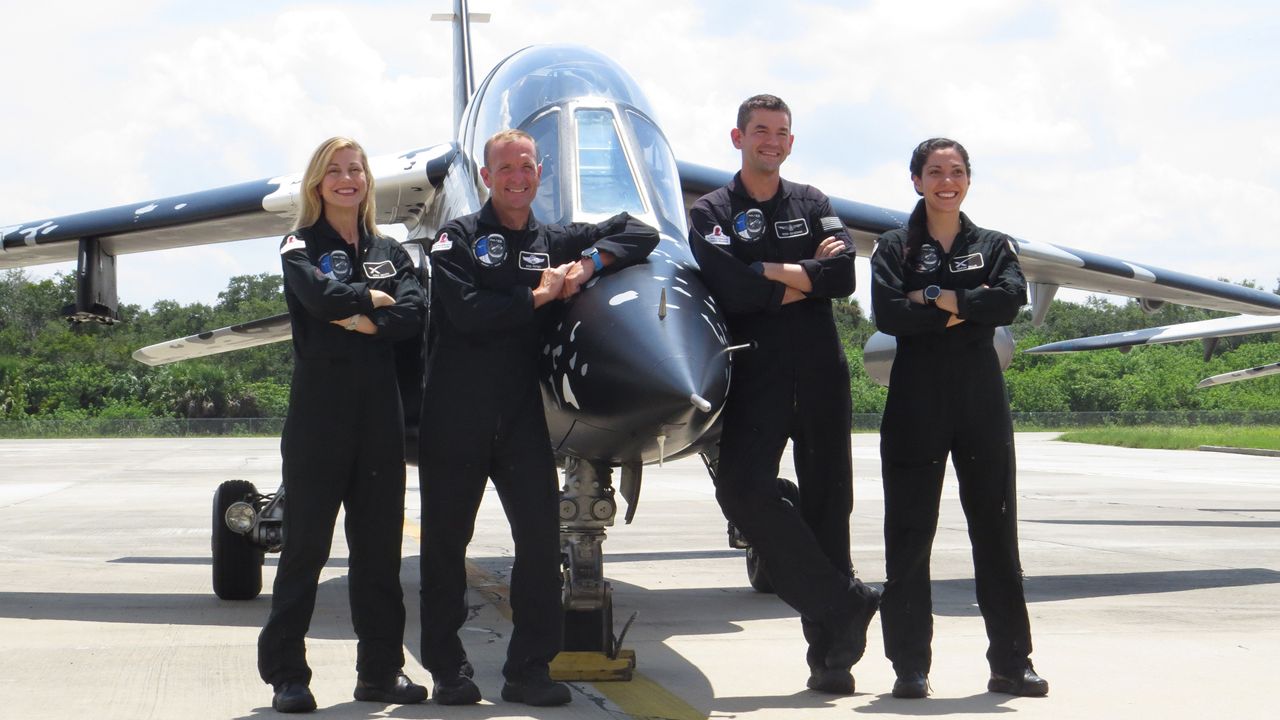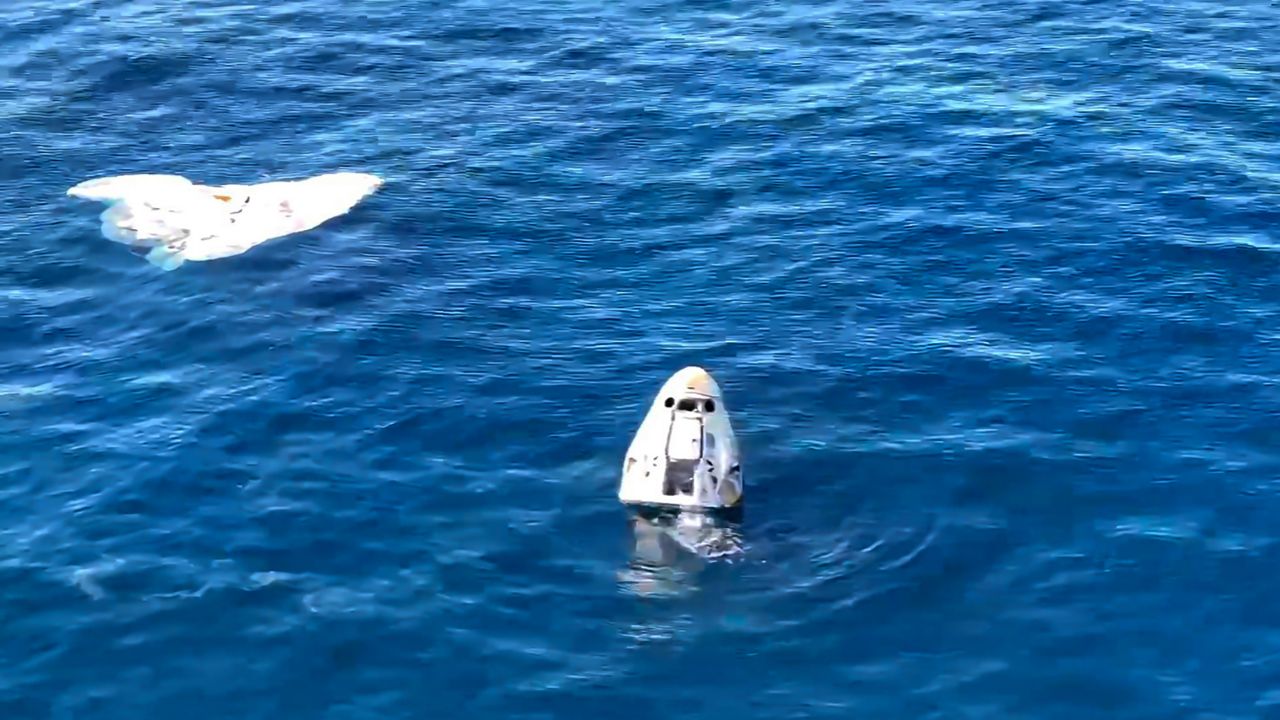HOUSTON, Texas — NASA has revealed the names of the astronauts who will be sent on the Artemis II mission to orbit the moon for the first time in more than 50 years.
What You Need To Know
- The crew will be made up of three NASA astronauts and one CSA astronaut
-
- The Artemis II mission is expected to launch in late 2024
- 🔻Scroll down to watch the announcement🔻
The four people who will be orbiting the moon since the Apollo program are:
NASA astronauts:
- Mission Specialist Christina Koch
- Pilot Victor Glover
- Commander Gregory Reid Wiseman
Canadian Space Agency astronaut:
- Mission Specialist Jeremy Hansen
Wiseman, who worked as a flight engineer on the International Space Station on the Expedition 41, will again fill in the same role for the Artemis II mission.
Glover's first flight to space was on the NASA-SpaceX Crew-1 mission where he also served as the pilot and second-in-command. He joined the space agency in 2013.
Before joining the Artemis II crew, Hansen was a fighter pilot. Now he will be known as the first Canadian to orbit the moon.
In addition to becoming the first woman to orbit the moon next year, Koch has already earned the title of being the first woman to be on the longest spaceflight of a total of 328 days. She has been with NASA for 10 years and has been a flight engineer for three International Space Station missions: Expedition 59, 60 and 61.

In their words
Each of the Artemis II crewmembers took the time to say a few words, with Wiseman asking some school children if it was hot enough inside NASA’s Johnson Space Center in Houston.
Glover offered a moment of thank you to each of the family members of the crew.
“I want to thank God for this amazing opportunity and I think I speak for all of us, I want to thank our families for the amazing support. (It) is your love and support that made this journey possible,” he said.
Hansen also offered thanks and explained why Canada would be joining this mission.
"When I step back, there are two reasons why a Canadian is going to the moon, and that makes me smile when I say that. The first one is American leadership. It is not lost on any of us that the United States could choose to go back to the moon by themselves. But America has made a deliberate choice over decades to curate a global team. And that in my definition is true leadership. … All of Canada is grateful for that global mindset and that leadership. So thank you,” he said. "The second reason is Canada’s "can do' attitude."
Koch, being the first woman to head to the moon, explained in poetic detail of what to expect from the launch of the 10-day mission.
“We are going to launch from Kennedy Space Center through the work of the Exploration Ground Systems team. We’re going to hear the words ‘go for launch’ on top of the most powerful rocket NASA’s ever made, the Space Launch System. And we’re going to ride that rocket for eight minutes into Earth orbit. We’re not going to the moon right away," she described. "We’re going to stay in an amazing high orbit, reaching a peak of tens of thousands of miles while we test out all of the systems on Orion (spacecraft) and even see how it how maneuvers in space. And then, if everything looks good, we’re heading to the moon.”
During his moment, Wiseman said that this was not just a NASA mission.
“This is a global effort for Artemis II and it is only going to get larger with Artemis III and beyond as we get private space flight involved,” he said, as he thanked not just space agency and industry leaders, but also the political leaders who are behind space exploration.
The Artemis generation
The announcement came at 10 a.m. CDT (11 a.m. EDT) at NASA’s Johnson Space Center in Houston, as NASA Administrator Bill Nelson was joined by other leaders from NASA and the Canadian Space Agency (CSA) to introduce the four-astronaut crew to the world.
“Members of the Artemis generation, we are going,” Nelson said Monday before he announced who the four humans would be for the historic mission that will see the first woman and person of color to orbit the moon. "We choose to go back to the moon and then on to Mars and we will do it together. In the 21st century, NASA explores the cosmos with our international partners."
Unlike the last times humans visited the moon, this mission will include a CSA astronaut, Hansen. He will be the first non-American to orbit Earth's sister.
On Sunday, President Joe Biden called to congratulate Wiseman, Glover, and Koch, and Hansen, according to a White House press release.
The president thanked the astronauts for their service and for inspiring people around the U.S. and the world.
“He also spoke to the children of the astronauts. The crew — which is the first to fly around the moon in more than 50 years — includes the first woman, first person of color, and the first international crewmember on a lunar mission,” the White House stated.
These 4 are Canada's astronaut corps. One will get announced today to voyage to the Moon - Jenni, David, Josh or Jeremy? @csa_asc pic.twitter.com/FkLRpJvpTA
— Chris Hadfield (@Cmdr_Hadfield) April 3, 2023
The Artemis II mission will follow what NASA has described as the successful 25.5-day Artemis I test flight. No crew members were on board when the mission launched on Nov. 16, but three mannequins were strapped into the Orion spacecraft to gather valuable details about what humans may experience during the lunar adventure.
The Artemis II mission is also considered a test flight and will not see a lunar landing. The 10-day mission is set to launch from NASA’s Kennedy Space Center in late 2024.
Last year’s Artemis I mission was also the debut of NASA’s Space Launch System rocket and a demonstration of the infrastructure of Exploration Ground Systems at KSC. Hardware is currently being assembled for the Artemis II SLS rocket and its Orion spacecraft.
On March 17, down at NASA’s Michoud Assembly Facility in New Orleans, Louisiana, teams attached the final section of the five-structure core stage of the rocket. The four RS-25 engines are in the process of being added to the 212-foot section of the rocket before it is shipped to KSC.
EGS is also working on human-rating the crew access arm on the Mobile Launcher as well as building out the new crew emergency egress systems. Testing at Launch Complex 39B will begin over the summer.








